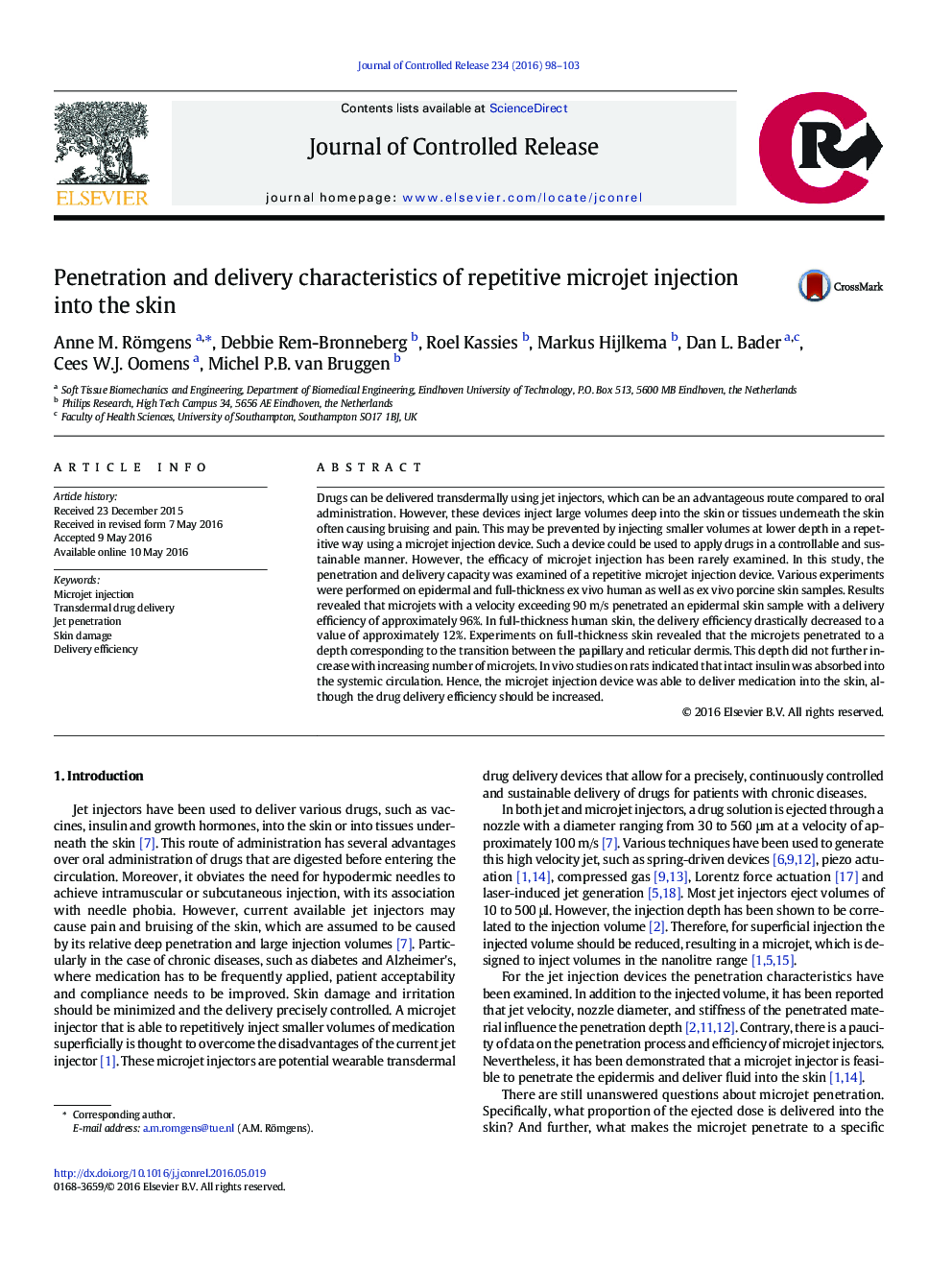| کد مقاله | کد نشریه | سال انتشار | مقاله انگلیسی | نسخه تمام متن |
|---|---|---|---|---|
| 1423513 | 1509015 | 2016 | 6 صفحه PDF | دانلود رایگان |
Drugs can be delivered transdermally using jet injectors, which can be an advantageous route compared to oral administration. However, these devices inject large volumes deep into the skin or tissues underneath the skin often causing bruising and pain. This may be prevented by injecting smaller volumes at lower depth in a repetitive way using a microjet injection device. Such a device could be used to apply drugs in a controllable and sustainable manner. However, the efficacy of microjet injection has been rarely examined. In this study, the penetration and delivery capacity was examined of a repetitive microjet injection device. Various experiments were performed on epidermal and full-thickness ex vivo human as well as ex vivo porcine skin samples. Results revealed that microjets with a velocity exceeding 90 m/s penetrated an epidermal skin sample with a delivery efficiency of approximately 96%. In full-thickness human skin, the delivery efficiency drastically decreased to a value of approximately 12%. Experiments on full-thickness skin revealed that the microjets penetrated to a depth corresponding to the transition between the papillary and reticular dermis. This depth did not further increase with increasing number of microjets. In vivo studies on rats indicated that intact insulin was absorbed into the systemic circulation. Hence, the microjet injection device was able to deliver medication into the skin, although the drug delivery efficiency should be increased.
Figure optionsDownload high-quality image (160 K)Download as PowerPoint slide
Journal: Journal of Controlled Release - Volume 234, 28 July 2016, Pages 98–103
